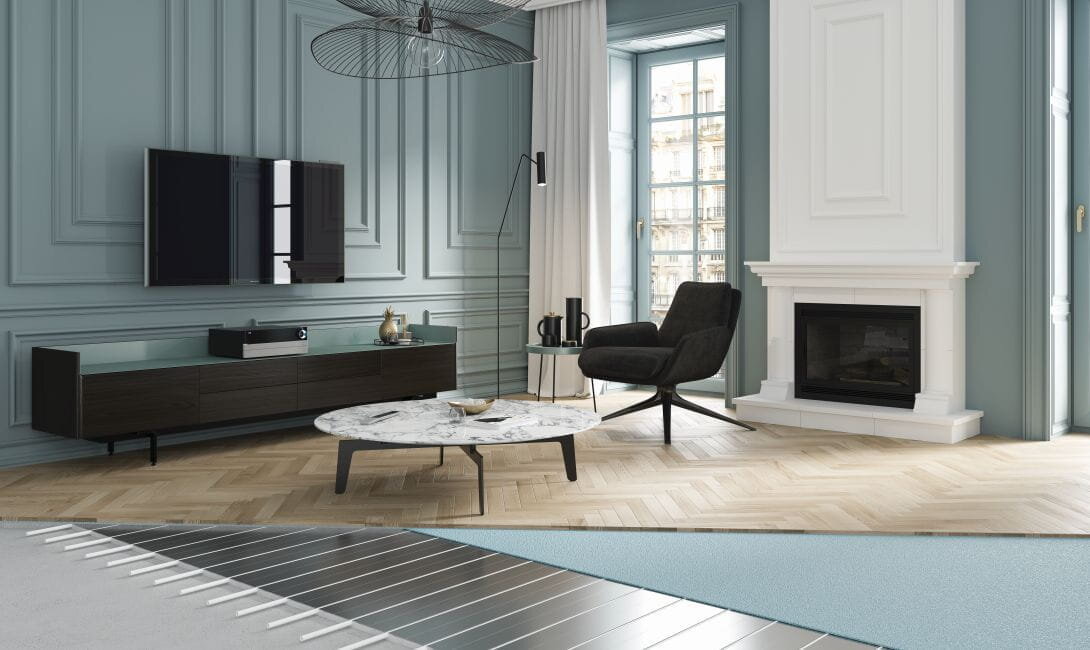High underfloor heating costs and 4 other myths busted
Despite its growing popularity, a lot of misconceptions still prevail when it comes to underfloor heating. In this article, we will take a look at some myths related to this heating system, such as high cost or energy consumption.
By providing you with the right information, we hope to guide you towards the best heating system for your project.

Myth 1: underfloor heating is only suitable for new construction projects
Underfloor heating is suitable for both existing and new buildings. You just have to take into account the type of project concerned as well as specific requirements when choosing between different underfloor heating systems. In new buildings, most of the time a wet system is applied, while in renovation projects, it’s better to go for a dry system floor or a special thin-layer system because of the low installation height.
Emmeti offers several solutions for the installation of low-thickness floor systems, ideal for renovations:
- the Thin Floor panel, which makes it possible to create a floor system in just 29 mm (finish excluded);
- the Klettjet R PE roll panel, which allows for a floor system in just 33 mm in height (finish excluded);
- the Grid Floor H0 panel without insulation and with self-adhesive base, which allows for a floor system of only 20 mm in height (finish excluded);
- the Dry Alu Floor dry system, which makes it possible to create a floor system at only 30 mm in height (finishing excluded).
Myth 2: underfloor heating costs more than radiator heating
Usually, installing an underfloor heating system is more expensive than installing a radiator heating system, which includes floor insulation, a piping system, and the installation.
However, if you look at the long term, you’ll recover the underfloor heating costs, as it’s a more energy-efficient way to heat a building.
Thanks to the low water temperature and the fact that you can easily combine underfloor heating with renewable energy sources such as a heat pump, it’s an interesting alternative to consider for both your wallet and the planet.
Myth 3: underfloor heating can only be used for heating
If you combine underfloor heating with a reversible heat pump or a heat pump system with a cooling function, you can use the underfloor system for both heating and cooling. In winter, the system will heat the floor, while in summer, the warm water that normally passes through the pipes is replaced by cool water. This keeps the floor area cool and enables it to absorb the warmth from the room so that you can create a comfortable room temperature. Compared to other forms of cooling, such as air conditioning, underfloor cooling can be perceived as more comfortable since it doesn’t create any draughts. In the case of using a floor system for cooling, it is absolutely essential to provide for the installation of an appropriate air dehumidification system.
Myth 4: underfloor heating cannot be combined with wooden floors
Lots of people still think that underfloor heating cannot be combined with parquet flooring or laminate. This is not true. Underfloor heating is suitable for all floor types. You just have to take into account the fact that different floor coverings have different thermal requirements and heat transfer abilities. So, although tiles conduct heat better than, for example, parquet, the surface temperature of parquet is more even than that of tiles. If you want to combine underfloor heating with a parquet floor, it’s important to choose a stable type of wood that can withstand differences in temperature and humidity, such as oak. Just make sure the parquet or laminate is suitable for surface heating.
Myth 5: underfloor heating requires a significant construction height
Another misconception about underfloor heating is that it forces you to substantially raise the floor in order to make space for the heating system. This is certainly not true for every underfloor heating system. As mentioned in Myth 1, Emmeti offers several low-thickness solutions, either with fluid or dry screed, which allow an underfloor system to be laid while maintaining a low thickness.




